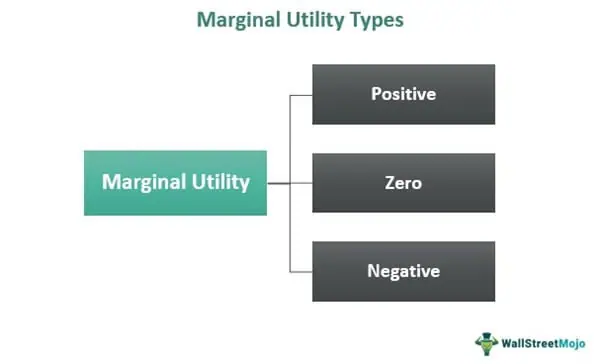Marginal Utilities: Definition, Types, Examples, and History
Definition of Marginal Utilities

For example, let’s say a person consumes one slice of pizza and derives a certain level of satisfaction from it. If they consume a second slice of pizza and their satisfaction increases, the change in total utility between consuming the first and second slice is the marginal utility of the second slice.
Types of Marginal Utilities

There are two main types of marginal utilities:
- Positive Marginal Utility: This occurs when the consumption of an additional unit of a good or service increases the total utility and brings additional satisfaction to the consumer. For example, the first few bites of a delicious meal may bring significant enjoyment and increase the overall satisfaction.
- Negative Marginal Utility: This occurs when the consumption of an additional unit of a good or service decreases the total utility and brings less satisfaction to the consumer. For example, consuming too much of a certain food item may lead to diminishing returns and a decrease in overall satisfaction.
History of Marginal Utilities
The concept of marginal utilities was first introduced by economists in the late 19th century, most notably by William Stanley Jevons, Carl Menger, and Léon Walras. These economists sought to explain how individuals make decisions about consuming goods and services based on the additional satisfaction or value they derive from each unit.
Since then, the concept of marginal utilities has become a fundamental principle in microeconomics and has been further developed and refined by subsequent economists. It has been integrated into various economic models and theories, such as consumer choice theory and utility maximization.
There are a few key points to understand about marginal utilities:
- Positive and Negative Marginal Utility: Marginal utility can be positive or negative. Positive marginal utility occurs when consuming an additional unit of a good or service increases overall satisfaction. Negative marginal utility, on the other hand, occurs when consuming an additional unit decreases overall satisfaction. For example, if a person is already full and eats another slice of pizza, the marginal utility of that slice may be negative as it leads to discomfort or even nausea.
Types of Marginal Utilities
In microeconomics, marginal utility refers to the additional satisfaction or benefit that a consumer derives from consuming one more unit of a good or service. Marginal utility can be classified into four main types:
3. Zero Marginal Utility: This occurs when the consumption of an additional unit of a good or service does not change the total utility or satisfaction of the consumer. It means that the consumer is already satisfied and does not derive any additional benefit from consuming more of the good or service. For example, if a person has already eaten enough pizza and is no longer hungry, consuming another slice will not provide any additional satisfaction.
4. Constant Marginal Utility: This occurs when the consumption of each additional unit of a good or service provides the same level of satisfaction or benefit. It means that the marginal utility remains constant regardless of the quantity consumed. This is often the case for goods or services that are considered essential or have a fixed utility. For example, a person may derive the same level of satisfaction from each additional glass of water consumed.

Emily Bibb simplifies finance through bestselling books and articles, bridging complex concepts for everyday understanding. Engaging audiences via social media, she shares insights for financial success. Active in seminars and philanthropy, Bibb aims to create a more financially informed society, driven by her passion for empowering others.
